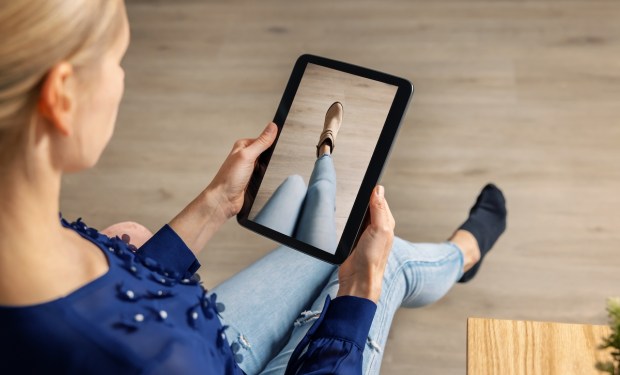Walmart and Amazon Race to Provide Best Virtual Try-On Experiences

As augmented reality and virtual reality expand the possibilities for eCommerce, Walmart and Amazon are stepping up their digital try-on capabilities to drive conversion.
Walmart shared via emailed announcement Wednesday (March 6) that it is expanding its existing Beauty Virtual Try-On capabilities through its app to include hair color options. The capability spans close to 500 products in the category so far. The retailer’s other virtual try-on categories include cosmetics and apparel. In late January, the chain launched an augmented reality try-on for eyewear.
Amazon, for its part, touted its virtual try-on capabilities in a Tuesday (March 5) blog post, noting that the option is available for products from popular brands including Adidas, Ray-Ban, L’Oreal and others.
“Amazon’s Virtual Try-On feature brings the in-store experience to your mobile device by using augmented reality to help you visualize a new pair of sneakers or sunglasses yourself, as well as lip colors and eyeshadow in real time, wherever you are,” the post stated, noting that the capability can help shoppers feel “confident in [their] purchase.”
By the Numbers
Walmart’s latest move comes as it looks to shrink the eCommerce gap between itself and its digitally native competitor. The November edition of PYMNTS’ “Whole Paycheck Report” series, “Amazon Extends Its Lead Over Walmart in Retail Spend,” drew on earnings reports in conjunction with national data from the U.S. Census Bureau and Bureau of Economic Analysis. The report estimated that Amazon holds an 8.2% share of consumers’ retail spending, while Walmart holds 7.2%. For eCommerce specifically, however, that gap widens dramatically to 53.3% for the former and 6.8% for the latter.
Extended reality capabilities can drive sales and loyalty, with a share of consumers seeking out these kinds of immersive eCommerce experiences, per research from PYMNTS Intelligence’s “How We Will Pay Report: How Connected Devices Enable Multitasking Among Digital-First Consumers,” which drew from a survey of more than 4,600 U.S. consumers.
For example, of the 95% of consumers who own or have in their homes at least one connected device, 38% said they were very or extremely interested in using virtual technology to see how items look in their room before buying them, and 6% were already doing this. Additionally, 32% said they would be similarly interested in the ability to use virtual reality technology to buy retail products that were in a physical store from their home or office, and 4% already did this.
The Virtual Try-on Boom
Virtual try-ons offer consumers a more convenient shopping experience, presenting them with the chance to be more confident in their purchase without having to visit a physical store. This ease caters to consumers’ desire for efficient and hassle-free shopping experiences from the comfort of their homes.
Plus, virtual try-on experiences can be engaging and interactive, capturing the attention of customers and encouraging them to spend more time exploring different products. This increased engagement can lead to higher conversion rates and ultimately drive sales for retailers.
Additionally, by enabling customers to virtually try on products before making a purchase, retailers can reduce the rate of returns due to sizing or fit issues. This not only saves time and resources for both the retailer and the customer but also improves customer satisfaction and loyalty.
Virtual try-on capabilities are growing in terms of the options available to consumers and shoppers’ adoption of the technology. The February launch of the Apple Vision Pro headset, which came alongside 600 new apps and games, brought a wide array of new eCommerce experiences ranging from fashion to cosmetics to home goods. Plus, last month, L’Oréal touted on its earnings call that it saw a 150% year-over-year rise in virtual try-ons.
For all PYMNTS retail coverage, subscribe to the daily Retail Newsletter.

